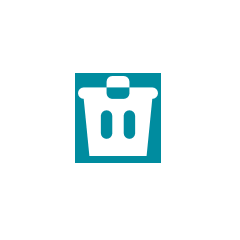Low carbon process technologies
1.BEAOA sludge double reflux deep nitrogen and phosphorus removal technology:
*Recognized by the Ministry of Ecology and Environment.
*10 authorized patents;
*Engineering applications are carried out in many places in Shandong, Guangxi and Inner Mongolia.。
2.BEWG Speedgrain
*5 authorized patents.
*One after another in Shandong, Guangdong, Inner Mongolia to carry out large-scale engineering applications.
3.BE Fenton advanced oxidation process package:
*Two patents have been granted.
*Applications in 6 projects in 2023.

Low carbon control technologies
1.BE-EMR north control biochemical system intelligent control robot:
*Replications on 50 projects have already been implemented.
2.BELEBC low carbon and efficient biochemical control technology:
*Application has been promoted in four projects.

BEWG adheres to the concept of green construction. Emissions reduction teams for construction projects rigorously control the emission of air pollution, water pollution, noise pollution, light pollution and waste.
Preventing air pollution
- Construction waste must be hoisted in a container and not thrown in the air carelessly. It should be removed and carried away in a timely fashion. Water should be sprayed to reduce dust.
- Cement and other bulk fine powders should be sealed or covered tightly. Measures should be taken during their unloading to reduce dust.
- Makeshift roads on site should be hardened with concrete or paved with cement hexagon blocks to prevent dust.
- Dust-monitoring devices must be installed on-site. Personnel and equipment must be arranged to spray water to reduce dust. These will be supervised by a construction site supervisor.
Prevention of water pollution
- A drainage ditch should be built on-site to centralize and collect the wastewater, to avoid seepage into the ground, soil pollution and groundwater contamination.
- The site must be equipped with a sedimentation tank so wastewater can be discharged into the municipal pipeline after sedimentation.
- The warehouse where oils are stored must be treated against leakage, to prevent oil spills, dripping, seepage, leakages water pollution.
- If a temporary canteen is set up on-site, it must be equipped with a simple and effective grease trap where oil should be removed regularly to prevent pollution.
Prevention of noise pollution
- Safety and noise-avoidance construction education for workers entering the site should be carried out. A management system for controlling manmade noise should be established to reduce loud sounds as much as possible and encourage staff to prevent noise disturbing residents.
- The supervisor is required to detect noise during the construction process, strictly monitor the hours of loud operations, and avoid construction at night and break time.
- To reduce the spread of loud sound, a sealed shed for mechanical equipment should be built and a silencer installed for noisy machinery.
Prevention of light pollution
- There should be no continuous lighting on the project site. Only necessary lighting shall be used, excessive lighting should be avoided during unavoidable construction at night.
- The lighting of the construction company should be centralized and cover only the scope of the site to avoid affecting nearby traffic.
Waste management
- A temporary waste storage site should be built at the site. The waste should be classified and stored separately, with clear safety signs and preventive measures.
- The waste should not be scattered or mixed during transportation. Recyclable waste should be recycled and reused.
- Engine oil, paints, anti-corrosion material tailings and cooking performance enhancers from the chemical laboratory will be collected by classification, and entrusted to a licensed organization for treatment. The generation time, production, storage, transfer and personnel for handover for waste liquid should be recorded.
During its operation, BEWG has strictly followed the Law of the People’s Republic of China on Prevention of Environmental Pollution Caused by Solid Waste, the Water Pollution Prevention and Control Law of the People’s Republic of China, the Law of the People’s Republic of China on the Prevention and Control of Atmospheric Pollution, and various local laws and regulations on environmental protection; meanwhile, the company has also issued the Quality, Environment, Occupational Health and Safety Management Manual of BEWG, Procedure Document for Quality, Environment, Occupational Health and Safety, Methods and Measures for Key Control Nodes of Traditional Water Construction Projects, Emergency Response Plan for Production Safety Accidents of BEWG and other internal policy documents, which clearly stipulate that for the exhaust gas, waste water, hazardous and non-hazardous waste generated during operation, the company must strictly comply with relevant emission standards or transfer them to a qualified third-party organization for disposal to achieve full-cycle management of all pollutants.
The major discharges generated by NCTCOG Water during its operations fall into the following four categories.
-
Solid Waste.


The solid waste discharged by BEWG mainly consists of sludge generated during the operation stage, with the sludge generated during the municipal sewage treatment stage being the main one. The Group vigorously promotes the reduction, harmlessness and resourcefulness of sludge, accelerates the reduction of the scale of sludge landfill, applies innovative technologies such as sludge carbonization and strong oxidation of sludge, and promotes the resourceful use of sludge to reduce the impact on the environment. The company's sludge reduction and resource center project in Mianyang, Sichuan Province, adopts the sludge drying and carbonization technology and high dry sludge dewatering technology researched and developed by BEWG, which makes the water content of dried sludge less than 60%, promotes sludge reduction and effectively reduces pollution. -
Wastewater.


BEWG has formulated the following management measures for the management of wastewater discharges in the plant: independent operation of water pipelines, rainwater pipelines, process pipelines, etc. in the plant to avoid cross-pollution; treatment of laboratory wastewater in accordance with the management standards of the laboratories; regular inspections of the facilities and equipment and pay attention to the maintenance of the facilities and equipment in order to prevent sewage from overflowing or discharging due to mechanical failure, which would bring negative impacts on the neighboring environment. -
Exhaust.


BEWG matches new projects with corresponding exhaust gas collection and treatment systems to form a limited space to avoid the spillage of odor, and supplements the exhaust gas collection and treatment systems for water plants that have already entered the operation stage. We set up biological deodorization devices for production facilities that generate special gases during the operation of the water plant to ensure that harmless emission standards are met. During the operation stage, we strictly implement the inspection and maintenance of the deodorization system, avoid working in limited space as much as possible, and improve the sealing method to prevent the odor from leaking out to the staff of the water plant and the surrounding residents. -
Noise.


Noise during the operation of the plant mainly comes from the operation of machinery and equipment, vehicle transportation and plant maintenance and construction industry. Through the use of low-noise machinery, retrofitting equipment, sound insulation facilities, prohibit the plant vehicles honking, reasonable arrangements for repair and maintenance of construction time and other targeted measures, BEWG made efforts to minimize noise pollution in the water plant.
- 2021-2023 Greenhouse gas emissions of main business segments
| unit | 2023 | 2022 | 2021 | |
| Total | ||||
| Total greenhouse gas emissions | Tons of carbon dioxide equivalent | 1,200,564 | 1,114,020 | 1 050,131 |
| Greenhouse gas emissions intensity | Tons of carbon dioxide equivalent per HK$ 10,000 | 0.49 | 0.52 | 0.45 |
| Comprehensive energy consumption | Tons of standard coal | 261.808 | 241.299 | 214.414 |
| Comprehensive energy density | Tons of standard coal per HK$ 10,000 | 0.107 | 0.112 | 0.093 |










